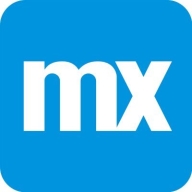

Find out what your peers are saying about Microsoft, Amazon Web Services (AWS), Red Hat and others in PaaS Clouds.
Once we deployed this same application as part of Google App Engine, the cost drastically reduced to just $120 for the small instance we use for our development.
Operationally, it was efficient for us because we could easily spin up new versions to demonstrate new functionality without modifying the original environment.
Google App Engine offers discounts for high resource utilization, similar to committed use discounts for Compute Engine.
It's not that they're really firing that personnel, but they can often focus on the core that really matters instead of repetitive processes in Excel forms and all of the overhead and human error that comes with that.
I see a fair return on investment using Mendix.
They route us toward the appropriate team handling Google App Engine or other services, so when there is an issue, the respective team connects and provides support.
The technical support was very quick and responsive, with a direct team line available.
Google invests in companies with technical expertise, offering connections to enterprise clients and technical support for their products.
I haven't often needed to seek direct support from Mendix teams as their online resources and knowledge database are comprehensive.
Mendix provides proper support, troubleshooting options, and a helping community.
If it's about having an issue that I can't solve despite being a Mendix expert and having tried every single bit and piece, support can feel like a stone wall.
Google App Engine scales well in the standard environment, which automatically handles traffic without manual scaling.
Google App Engine is highly scalable and can integrate easily with other applications.
With automatic scaling, Google Cloud handles the scaling process, which leads to my high rating.
Mendix supports scaling well with its comprehensive online documentation and learning paths.
Mendix provides options for handling scalability and maintainability through features like validation, workflow and nanoflow minimization, and user components, enabling projects to be easily managed and scaled.
Also solutions processing data at scale, talking about one million packages a day.
I have not experienced any crashing or instability with Google App Engine.
However, large code bases can still cause it to slow down.
I would rate the stability of Google App Engine a perfect 10 out of 10, as it is completely managed by Google.
Mendix has been stable in my experience, with reliable performance for enterprise applications and minimal downtime or critical issues.
I recently encountered an issue with deploying applications on the Mendix sandbox, which took a week to resolve.
It would be beneficial if Flex services could scale down to zero instances during periods of no traffic.
The pricing is higher compared to alternatives like Kubernetes and Compute Engine.
In the Flex environment, SSH access is not available for private instances.
Access to the database is limited in Mendix's public cloud, preventing direct database interaction or inspection.
I choose a seven mainly due to the issues we've faced with slowdowns and bugs during development, while runtime has been very stable.
Native development is not very strong, and some developer tools are missing, such as shortcuts to edit multiple variables.
For F1 usage with 256 MB, it is free.
I've never heard anyone express that the licenses are too expensive.
My GCP billing is about 10 lakh INR per month, and Google App Engine contributes only 25,000 to 30,000 INR.
The app license costs between $13,000 to $14,000, which is prohibitive for startups.
My experience with pricing, setup cost, and licensing is reasonable;
The solution offers scalability, autoscaling based on user demand, and security, as Google manages all updates and security patches.
I also appreciate the Google App Engine standard environment because it handles traffic scaling without manual intervention.
Deploying code is straightforward without worrying about deployment or integration.
Mendix's integration capabilities are impressive, allowing for rapid and on-the-fly integration of almost anything imaginable.
The best features that Mendix offers are proper guardrails that prevent starting from scratch, ensuring a certain level of security, user experience, and standardization for implementing workflows, API integrations, and how you set up your domain model.
For security, I value the built-in authentication, role-based access control, and data protection features, which make enterprise apps safer without needing heavy custom setup.
| Product | Market Share (%) |
|---|---|
| Google App Engine | 2.0% |
| Microsoft Azure | 18.0% |
| Amazon AWS | 13.6% |
| Other | 66.4% |
| Product | Market Share (%) |
|---|---|
| Mendix | 15.2% |
| OutSystems | 16.1% |
| Salesforce Platform | 7.5% |
| Other | 61.2% |


| Company Size | Count |
|---|---|
| Small Business | 15 |
| Midsize Enterprise | 7 |
| Large Enterprise | 13 |
| Company Size | Count |
|---|---|
| Small Business | 25 |
| Midsize Enterprise | 6 |
| Large Enterprise | 23 |
Google App Engine is a Platform-as-a-Service (Paas) provider that equips web application developers with all the resources and tools that they need to develop, test, and run their applications on Google's infrastructure. Everything is built into the kit, so with one download of the SDK, you'll be well on your way to first-rate apps.
Mendix is a low-code application development platform that helps your organization accelerate its application development lifecycle. The solution is designed to enable you to create software faster by abstracting and automating the development process for better business outcomes at speed and scale. Mendix has many key capabilities, including a tailored IDE for every developer, built-in collaboration tools for team development, feedback management, agile project management, the ability to build a truly responsive design across devices, and much more.
Mendix Features
Mendix has many valuable key features. Some of the most useful ones include:
Mendix Benefits
There are many benefits to implementing Mendix. Some of the biggest advantages the solution offers include:
Reviews from Real Users
Below are some reviews and helpful feedback written by PeerSpot users currently using the Mendix solution.
PeerSpot user Somnath G., Solution Architect and LowCode Practice Lead at a tech services company, says, "What I found most valuable in Mendix is that it's very much suitable for mobile apps such as native Android or IOS supported mobile apps. The multiple features of the platform are very, very attractive and very popular. Mendix has technical features such as microflows and nanoflows. You can also access data models in the platform. These are the features that are very, very strong in Mendix. I got my hands dirty on other low-code platforms, but I have not seen such strong features in them compared to the microflows, nanoflows, and data model access that are in Mendix, including creating and integration. The platform has out-of-the-box adapters or out-of-the-box-connectors that you can integrate with different interface applications such as SAP, Salesforce, Oracle EBS, etc."
Sameer V., Consulting Manager at Deloitte, mentions, “Their native mobile capability is very good. In general, the way they launch the product has been great. Their product launching strategy is far better than any other platform. I work in OutSystems and Mendix. They tend to be more on the legacy side, OutSystems. With this solution, the product launching strategy is very, very agile. I really like when they roll out their updates, which are very, very frequent.”
Robert B., Solutions Architect at a computer software company, explains, The solution is just very quick and responsive. The initial setup is very straightforward, and those implementing the product do not have to be very technologically advanced in order to manage the process.”
We monitor all PaaS Clouds reviews to prevent fraudulent reviews and keep review quality high. We do not post reviews by company employees or direct competitors. We validate each review for authenticity via cross-reference with LinkedIn, and personal follow-up with the reviewer when necessary.